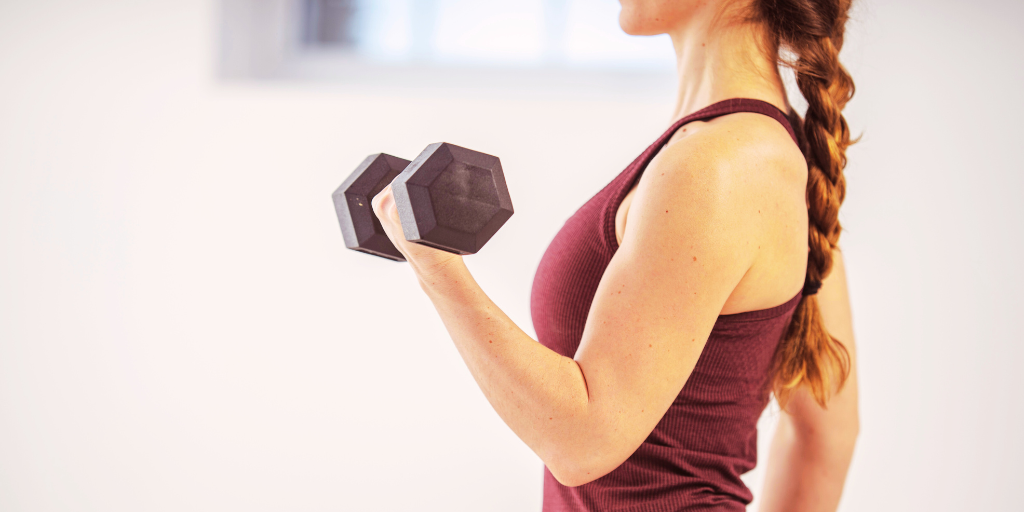
What if I told you that you could fight insulin resistance by eating carbohydrates? It sounds completely backward, doesn’t it? It’s almost like trying to put out a fire with gasoline. For years, you’ve been told that to fix insulin resistance, you must cut carbs. And for many people, that’s a critical first step. But what happens when you want to reintroduce them? Or what if you’ve been low-carb for so long that even a small amount of sugar sends your blood glucose soaring? It feels like a trap. You’re stuck between a rock and a hard place, unable to properly use the very fuel your body is designed to run on.
This is a common frustration, and it stems from a misunderstanding of the root problem. The issue isn’t just the carbohydrates themselves; it’s your body’s inability to process them efficiently. This condition, known as insulin resistance, means your cells have become deaf to the call of insulin, leaving sugar stranded in your bloodstream. But there is a powerful, science-backed strategy that allows you to consume carbs at a very specific time to retrain your cells, improve your ability to handle glucose, and rebuild your metabolic flexibility—all without the negative consequences of an insulin spike. This article will break down exactly when and how you can use this method to your advantage. (Based on the expertise of Thomas Delauer).
Key Takeaways
- The Real Enemy is Insulin Resistance: Carbohydrates are not inherently bad. The core issue is insulin resistance, a metabolic state where your cells can’t effectively use glucose from your blood, leading to high blood sugar.
- Improve Your Glucose Tolerance: The goal is to improve your “glucose tolerance,” which is your body’s ability to handle carbohydrates properly. Long-term low-carb diets can sometimes impair this function temporarily.
- The Golden Window for Carbs: The single best time to consume carbohydrates to fight insulin resistance is during an intense workout. This is not before or after, but while your muscles are actively working.
- The Science is “Insulin-Independent Glucose Uptake”: During exercise, your muscle cells can absorb glucose directly from the bloodstream without needing insulin. This unique mechanism allows you to fuel your cells without taxing your pancreas.
- Watermelon is an Ideal Choice: Due to its mix of glucose and fructose, high water content for hydration, and citrulline for improved blood flow, watermelon is an excellent option for an intra-workout carb source.
- Rebuild Your Metabolic Machinery: Using this strategy helps your cells’ mitochondria get re-accustomed to using glucose for energy, effectively retraining your body at a cellular level to become more metabolically flexible.
1. Understanding the Real Problem: It’s Insulin Resistance, Not Just Carbs

For so long, carbohydrates have been painted as the villain in our health story. But let’s be very clear: your body is perfectly designed to use carbohydrates for energy. The real problem, the one that has led to so much confusion and frustration, is insulin resistance. Think of insulin as a key. When you eat carbs, your blood sugar rises, and your pancreas releases insulin. This insulin key is supposed to unlock your cells, allowing glucose to enter and be used for fuel. With insulin resistance, the locks on your cells have become rusty. The key no longer fits properly. Your cells ignore the signal, glucose can’t get in, and it builds up in your bloodstream. This is what we call high blood sugar.
So, you see, the carbs aren’t the initial aggressor. The underlying problem is the metabolic dysfunction that prevents you from using them. This dysfunction can be caused by many things, including chronic inflammation, a sedentary lifestyle, and yes, a long-term diet high in processed carbohydrates and sugar that constantly overworks the system. When you’re in this state, just forcing more carbs into your body is like shouting at someone who can’t hear you. It doesn’t work. That’s why low-carb diets are so effective initially; they remove the “noise” (the constant influx of glucose) and give your cells a chance to rest and regain their sensitivity. But this is only one part of the equation.
2. The Low-Carb Paradox: Improved Sensitivity, Worsened Tolerance

Going low-carb or keto can be a phenomenal tool. It has been clearly shown to help people reverse insulin resistance and regain control of their blood sugar. I personally used a very low-carb approach for about 10 years to reverse my own type 2 diabetes. However, an interesting thing happens when you avoid carbs for a very long time. Your body becomes so adapted to using fat for fuel that it almost forgets how to handle a sudden influx of carbohydrates. The metabolic machinery for processing glucose gets put on the back burner.
As a result, when you do decide to eat a piece of fruit or a sweet potato, your blood sugar can spike dramatically. This is not because your insulin resistance has returned; it’s because your glucose tolerance is poor. Your body is simply out of practice. I experienced this myself. Despite being very insulin sensitive on the surface, having a moderate amount of carbs would send my blood glucose sky-high. This is a common phenomenon, and it can be discouraging. It makes you feel like you can never eat a carb again. The good news is that this state is usually temporary. It took my body about two to four weeks to restore proper function and regain its glucose tolerance. The strategy we’re about to discuss is a way to accelerate that process safely.
3. Introducing “Insulin-Independent Glucose Uptake”: The Game-Changer

Here is where the science gets really exciting. There is a special mechanism in your body that allows you to bypass the entire insulin-resistance problem. It’s called insulin-independent glucose uptake. It’s a mouthful, but the concept is simple: it’s the uptake of glucose by your cells that happens independently of insulin.
This special pathway is activated in your muscles when they are actively working and contracting, like during an intense workout. When you’re lifting weights, sprinting, or doing high-intensity training, your muscle cells become hungry for energy. To get that energy quickly, they open up special gateways on their surface (called GLUT4 transporters) to pull glucose directly from the bloodstream. They don’t need to wait for the insulin key to unlock the door. This is a survival mechanism designed to fuel your muscles during intense physical exertion. For someone with insulin resistance, this is a golden opportunity. It’s a free pass. You can get glucose into your cells to be burned for energy without needing to stimulate your already-taxed pancreas to produce more insulin.
4. The Golden Window: Why Intra-Workout Carbs Are Key

Understanding this mechanism is crucial because it highlights the importance of timing. Many people talk about pre-workout or post-workout nutrition, but this strategy is different. Having carbs before your workout is not the same thing. If you eat a banana 30 minutes before you hit the gym, your body will digest it, your blood sugar will rise, and you will trigger an insulin response—the very thing we’re trying to manage. The magic happens when you consume the carbohydrates while you are actively working out.
By consuming a small amount of easily digestible carbs during your training session, you are delivering fuel right when the insulin-independent pathway is wide open. The glucose goes directly from your bloodstream into your working muscle cells, where it’s immediately used for energy. There’s no significant spike in blood sugar and no demand for insulin. You are essentially spoon-feeding your muscles the energy they need at the exact moment they can take it without any metabolic downside. This makes you the person in the gym sipping on watermelon juice or eating a few pieces of fruit mid-set, but trust me, you’re performing a brilliant metabolic hack.
5. Your Perfect Intra-Workout Fuel: The Case for Watermelon

So, what kind of carbs should you be consuming during this window? You want something that’s easy to digest, hydrating, and provides the right kind of fuel. This is why watermelon is a fantastic choice. First, it’s about 92% water, so it’s incredibly hydrating, which is essential during a tough workout. Second, it contains a good combination of glucose and fructose, providing quick energy for your cells.
But there’s another benefit that makes watermelon a superstar. It’s a rich source of an amino acid called L-citrulline. Your body converts citrulline into another amino acid, arginine, which is a precursor to nitric oxide. Nitric oxide is a vasodilator, meaning it helps relax and widen your blood vessels. This increases blood flow throughout your body, which does two wonderful things during a workout: it gives you a better muscle “pump,” and more importantly, it enhances the delivery of that water and glucose directly to your hard-working muscle cells. This synergy makes watermelon an almost perfectly designed intra-workout fuel for someone looking to improve their glucose tolerance.
6. How This Strategy Rebuilds Your Metabolic Machinery

This isn’t just a short-term trick to get some energy during a workout. It’s a long-term strategy for retraining your body. Remember how we said that long-term low-carb dieting can make your cellular machinery for processing glucose a bit rusty? By using the insulin-independent pathway, you are gently reintroducing glucose to your cells in a controlled way.
You are giving the mitochondria—the tiny power plants inside your cells—a chance to work with glucose again. It’s like a soft reboot for your carb metabolism. Over time, as your cells get re-accustomed to seeing and using glucose efficiently, your overall glucose tolerance can improve. This means that when you do have carbohydrates as part of a normal meal, your body will be better prepared to handle them. You may notice that your blood sugar doesn’t spike as high, and it comes back down to baseline more quickly. You are essentially rebuilding your metabolic flexibility from the inside out, all by leveraging this unique window of opportunity during your workouts.
7. Putting It Into Practice: A Step-by-Step Guide

If you’re ready to try this for yourself, the approach is simple. The key is to do it during a workout that is sufficiently intense to create a real demand for energy in your muscles. A casual walk on the treadmill won’t cut it; think resistance training or high-intensity interval training.
- Start Your Workout: Begin your training session as you normally would.
- Introduce Carbs Mid-Workout: Once you’re in the thick of it, start consuming your carb source. This could be a few cubes of fresh watermelon or about 4-6 ounces of pure watermelon juice. Sip it or eat it between sets.
- Monitor How You Feel: Pay attention to your energy levels. You may notice improved performance and endurance during the workout itself.
- Test and Observe: This is a personal experiment. If you monitor your blood glucose, you can see the effects for yourself. Have your intra-workout carbs, and then on a subsequent day, see how your body responds to a standard meal containing carbs. Does your glucose respond a little better? Does the spike seem less dramatic? It takes time, but you are looking for gradual improvement.
This isn’t a license to go on a sugar binge. It’s a targeted, strategic tool. You have to try it out for yourself and see how your body responds.
Conclusion
Navigating the world of carbohydrates and insulin resistance can feel like walking through a minefield. But it doesn’t have to be that way. By understanding the science of how your body works, you can find powerful strategies to reclaim your metabolic health. Consuming a small amount of the right kind of carbohydrates, like watermelon, during an intense workout leverages the unique pathway of insulin-independent glucose uptake. This allows you to fuel your muscles, improve performance, and most importantly, retrain your cells to handle glucose effectively without the negative impact of an insulin spike. It’s a way to begin making peace with carbohydrates and rebuilding a more flexible, resilient metabolism, one workout at a time.
Source: Thomas Delauer

